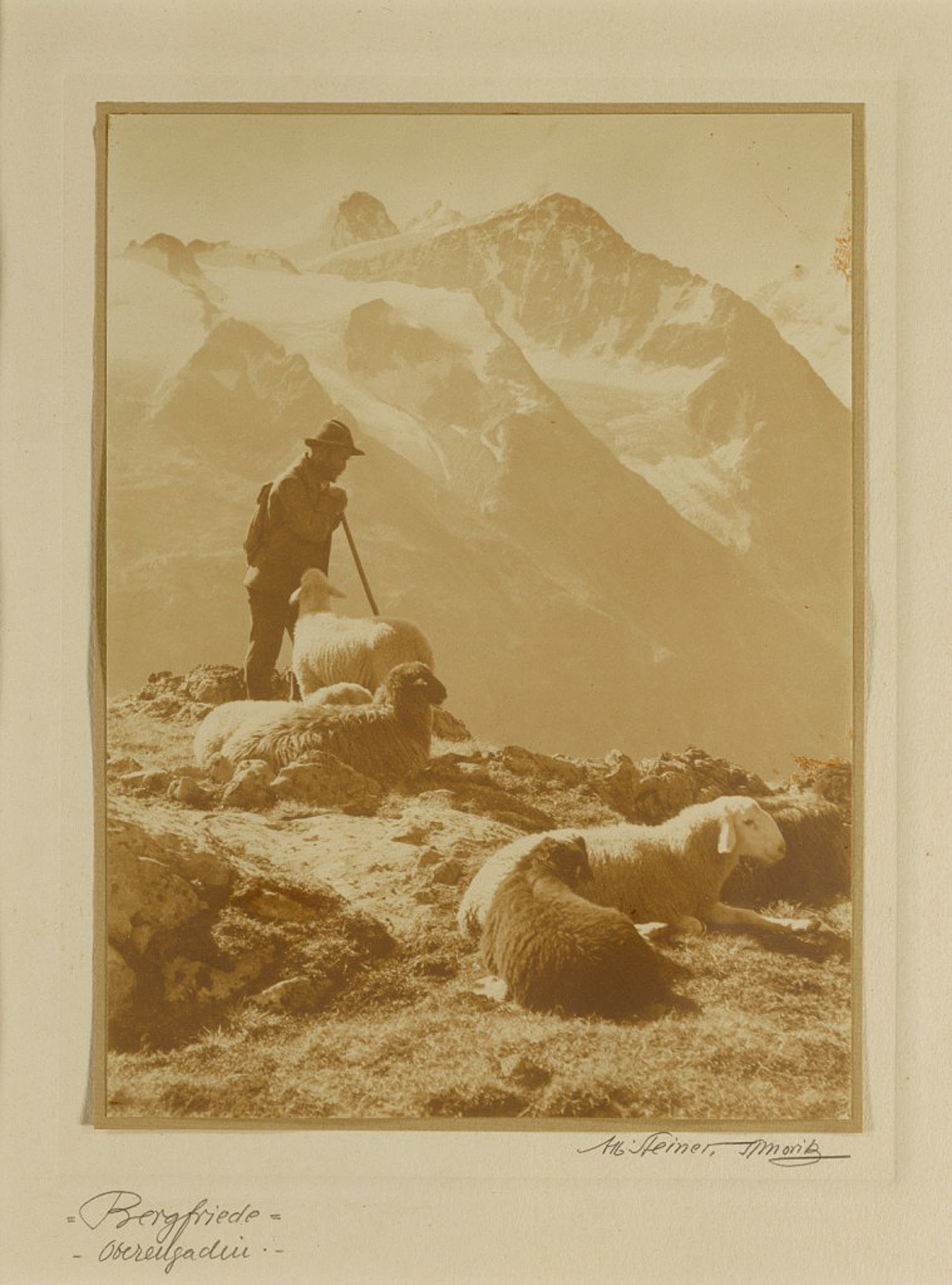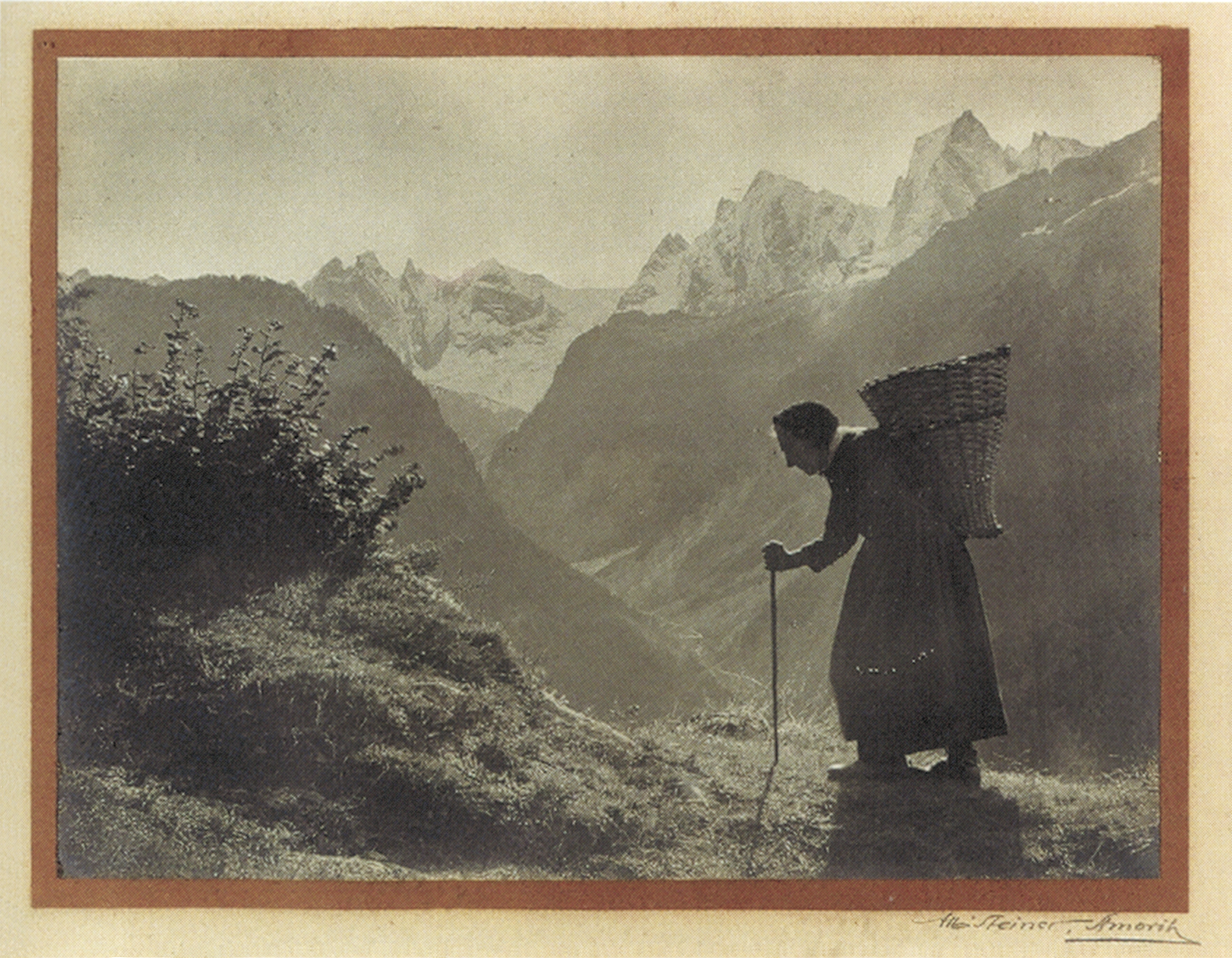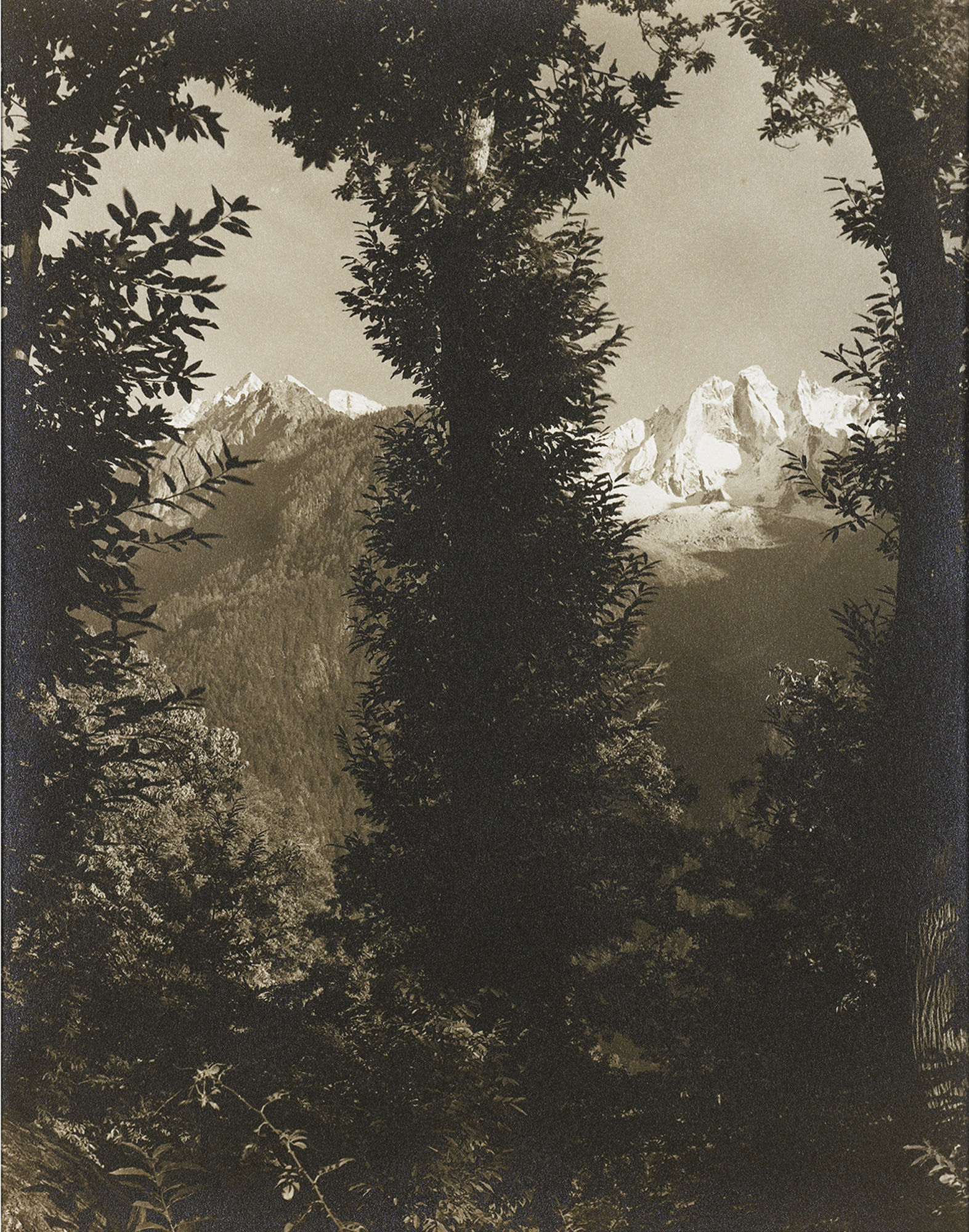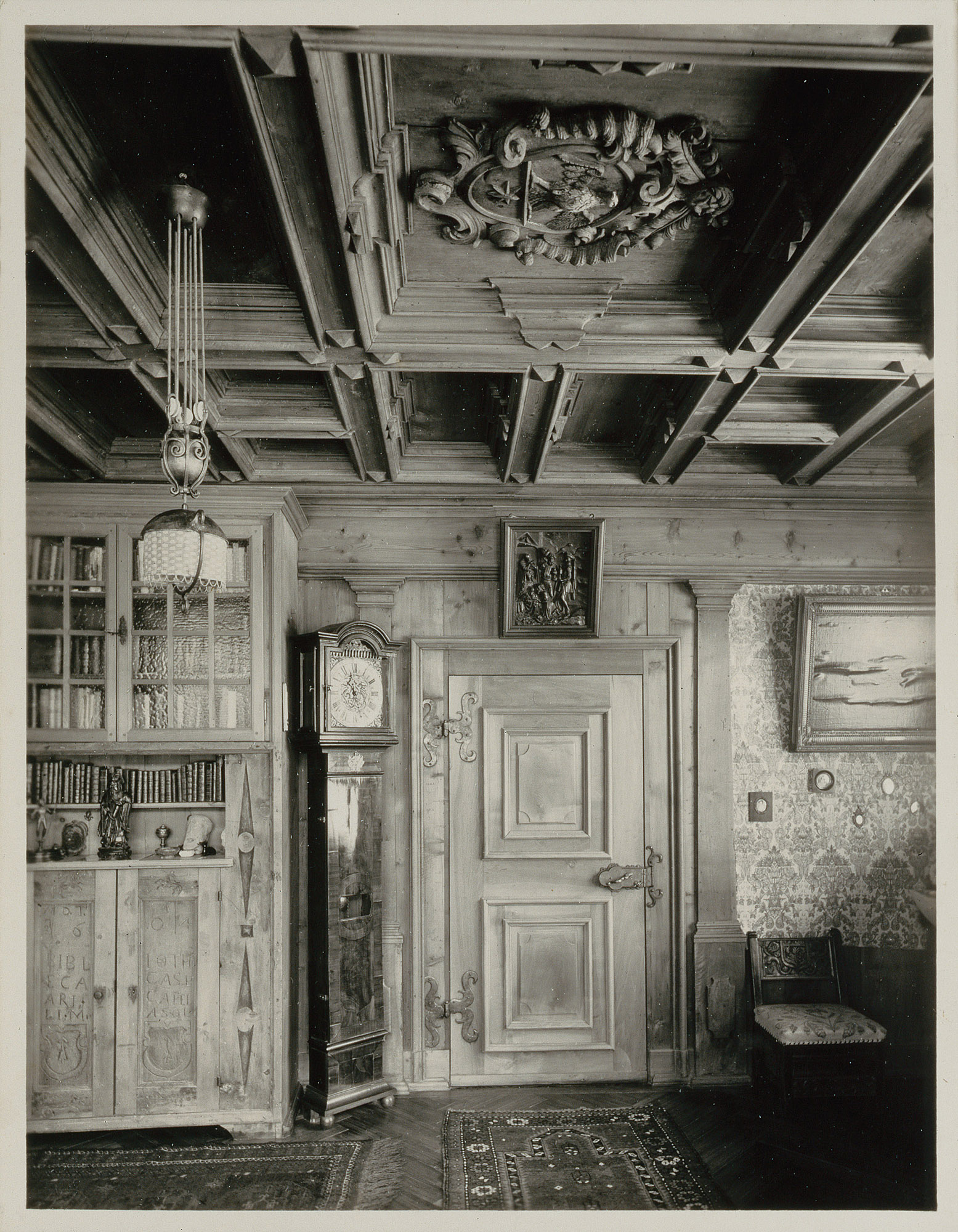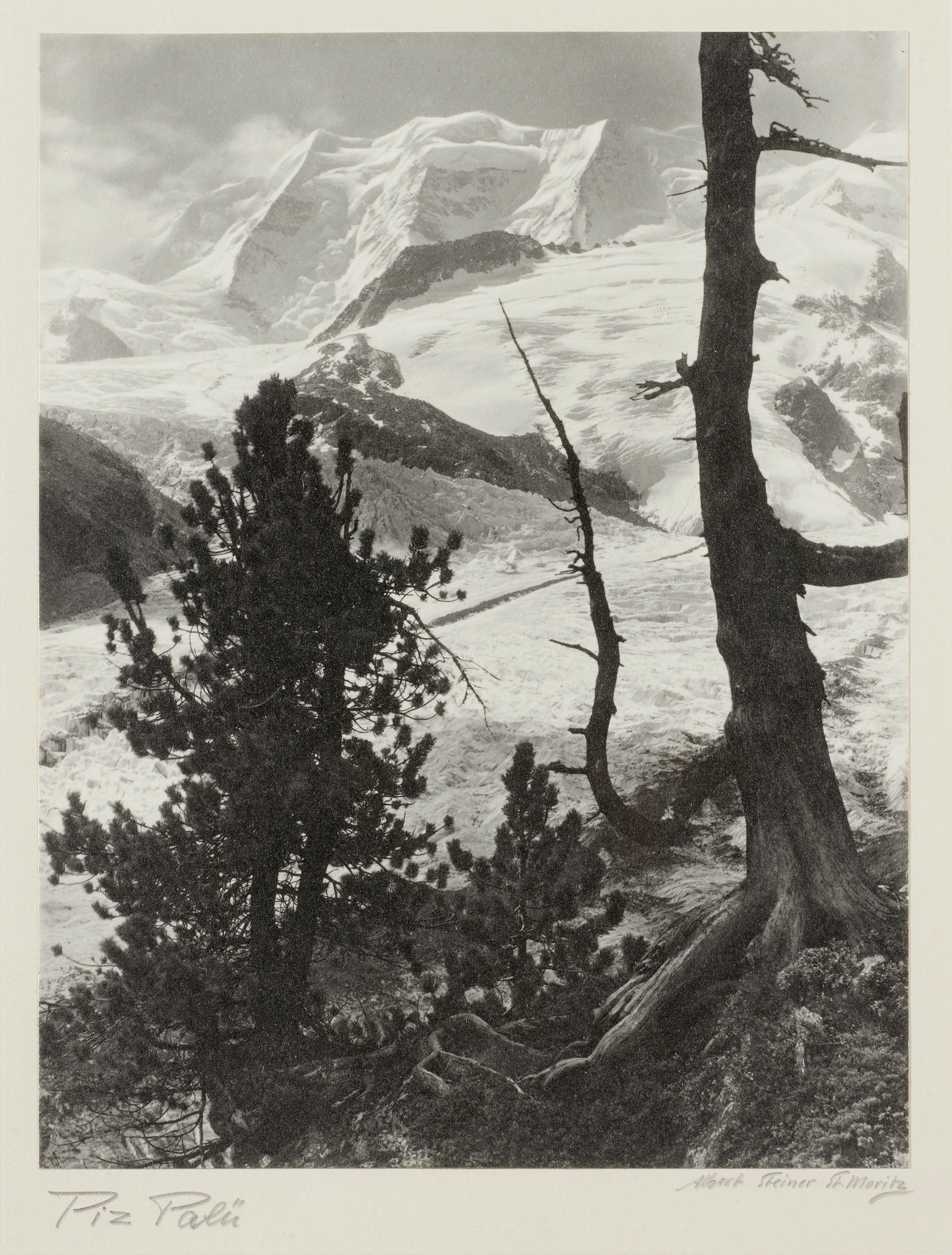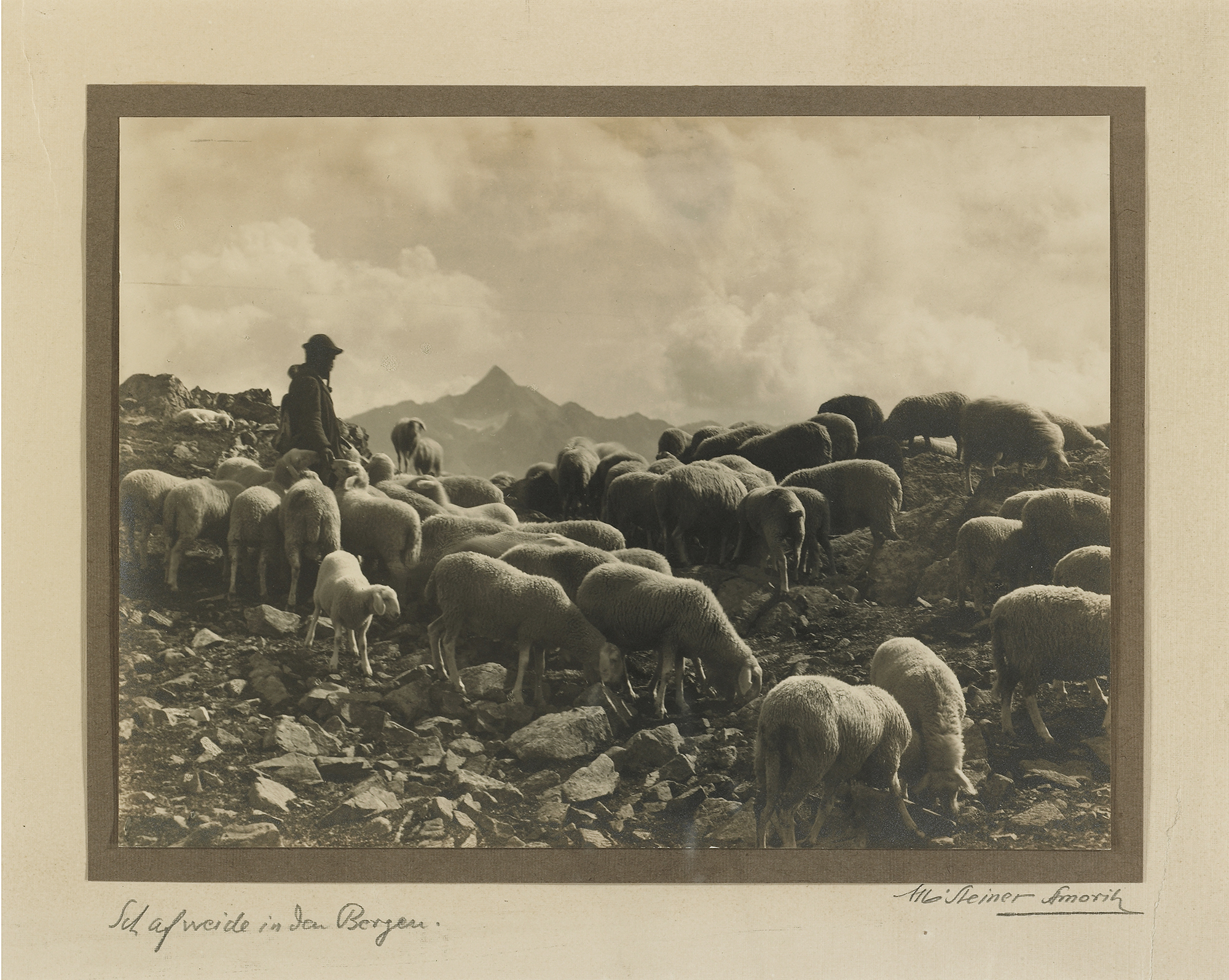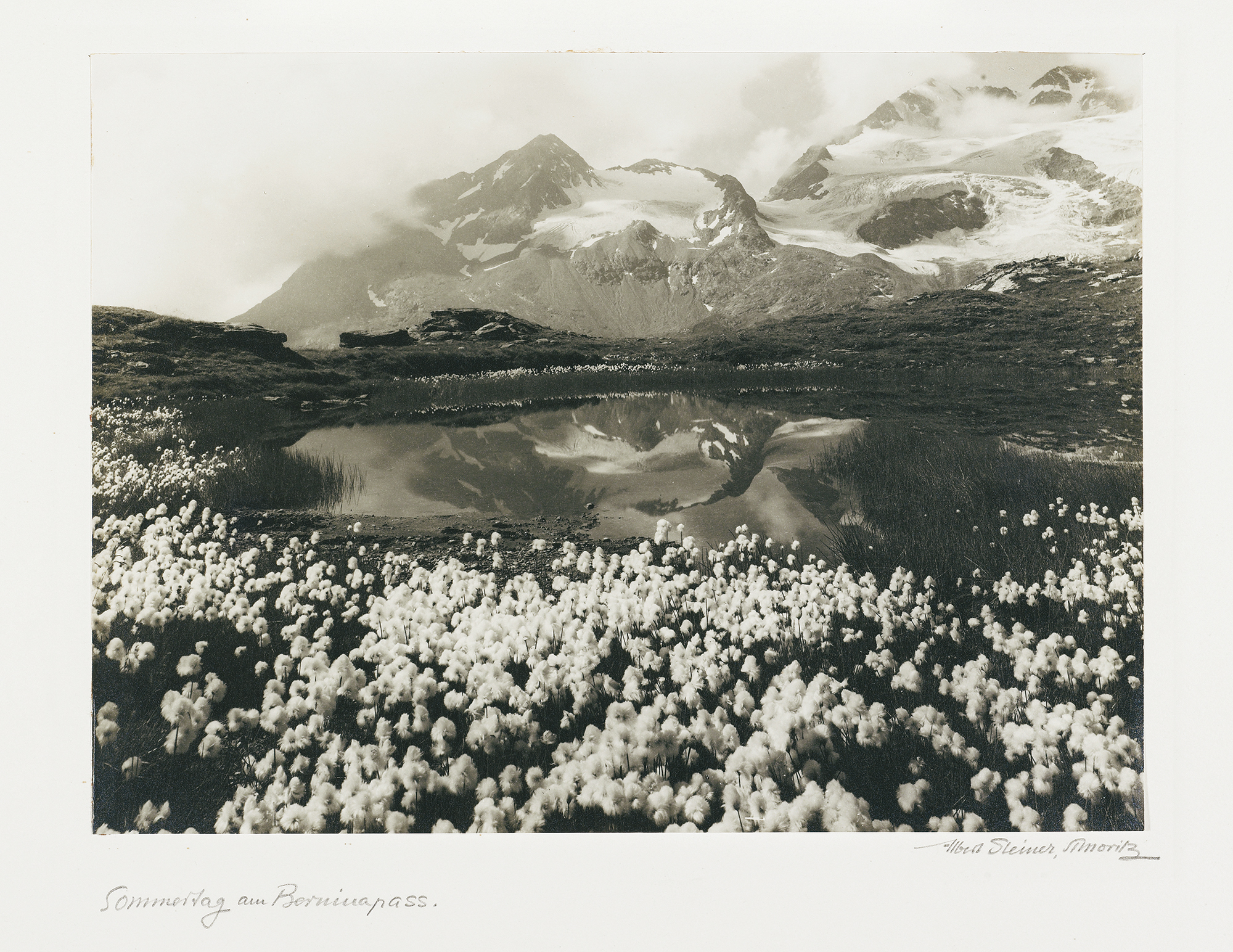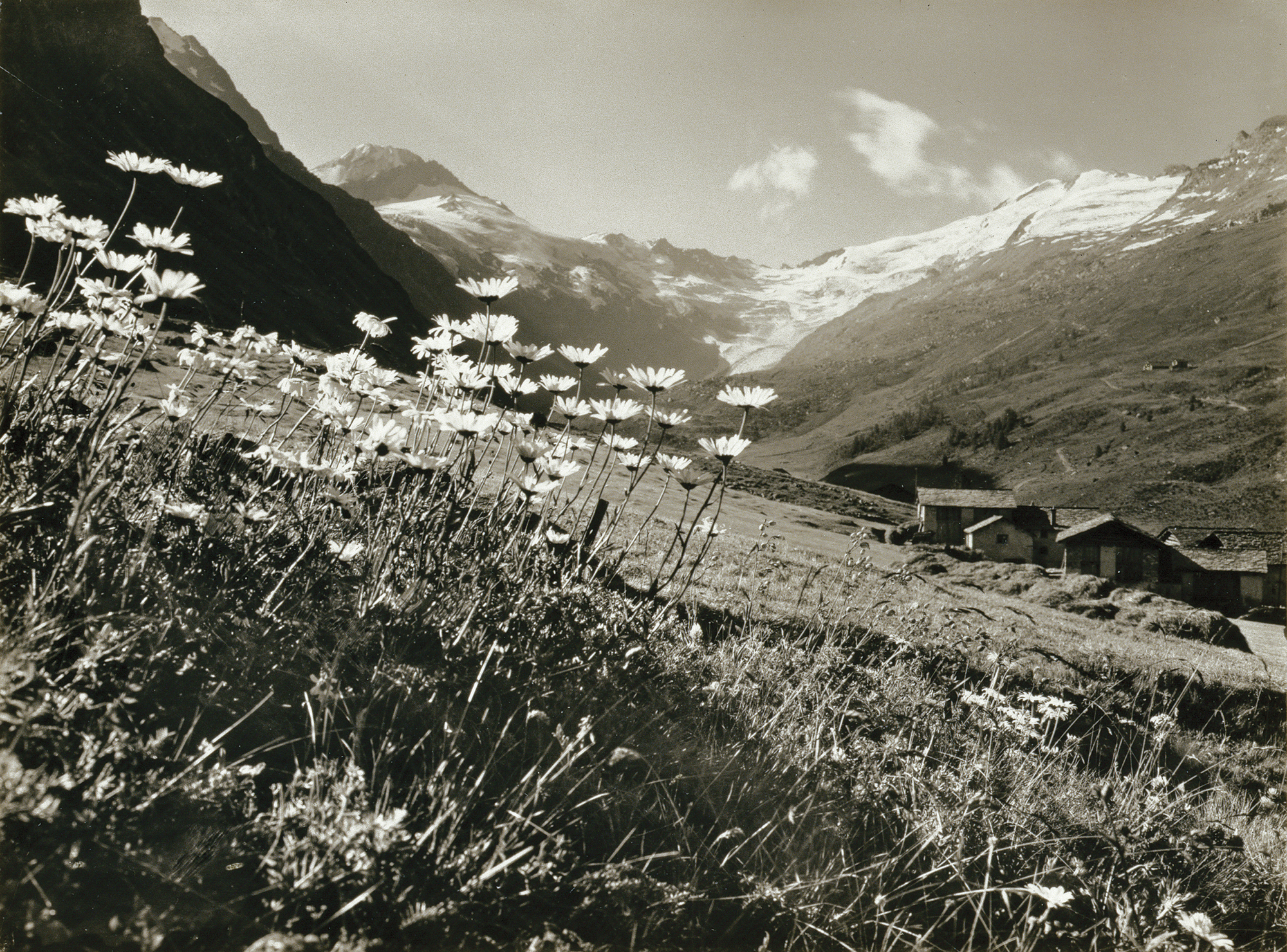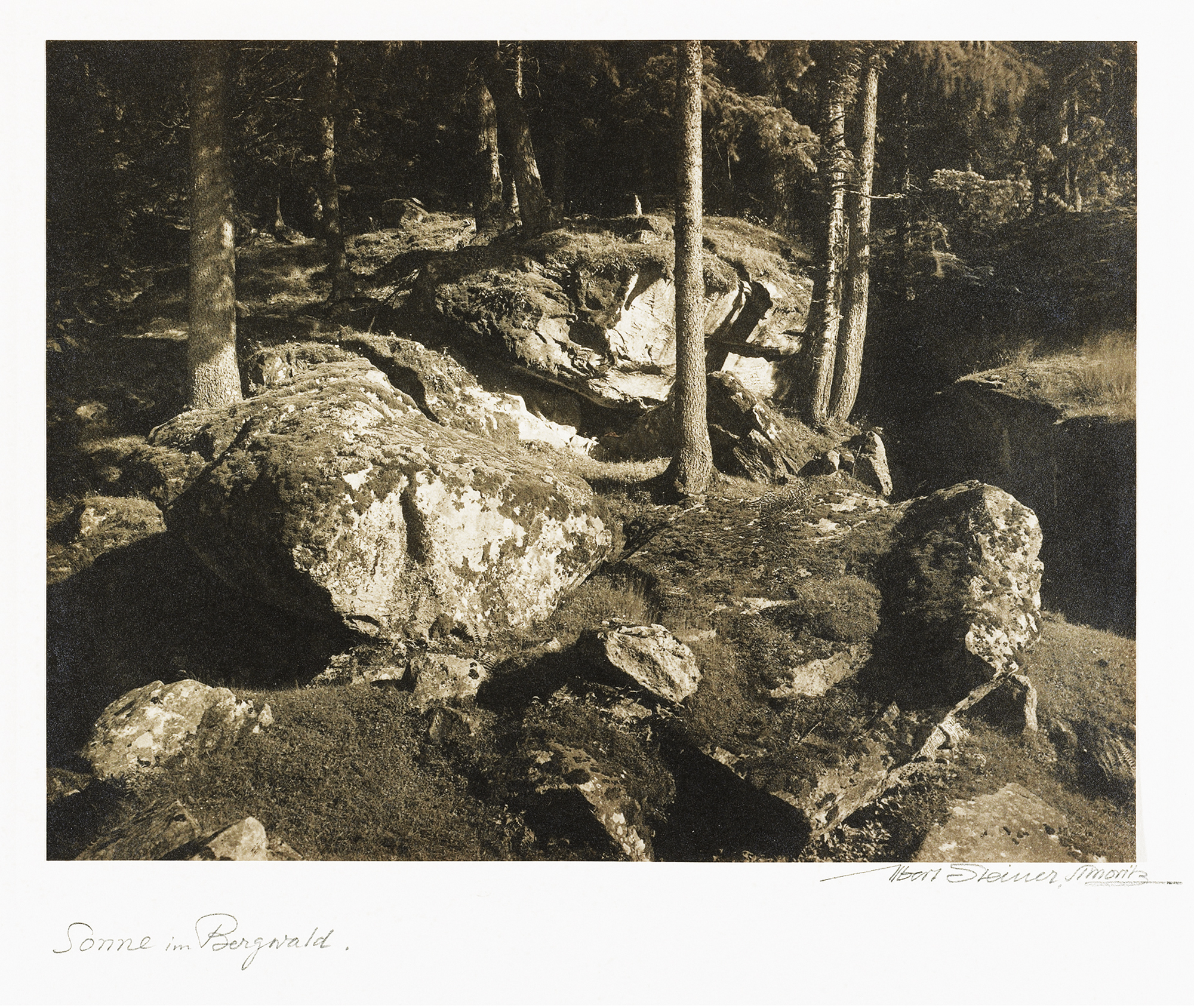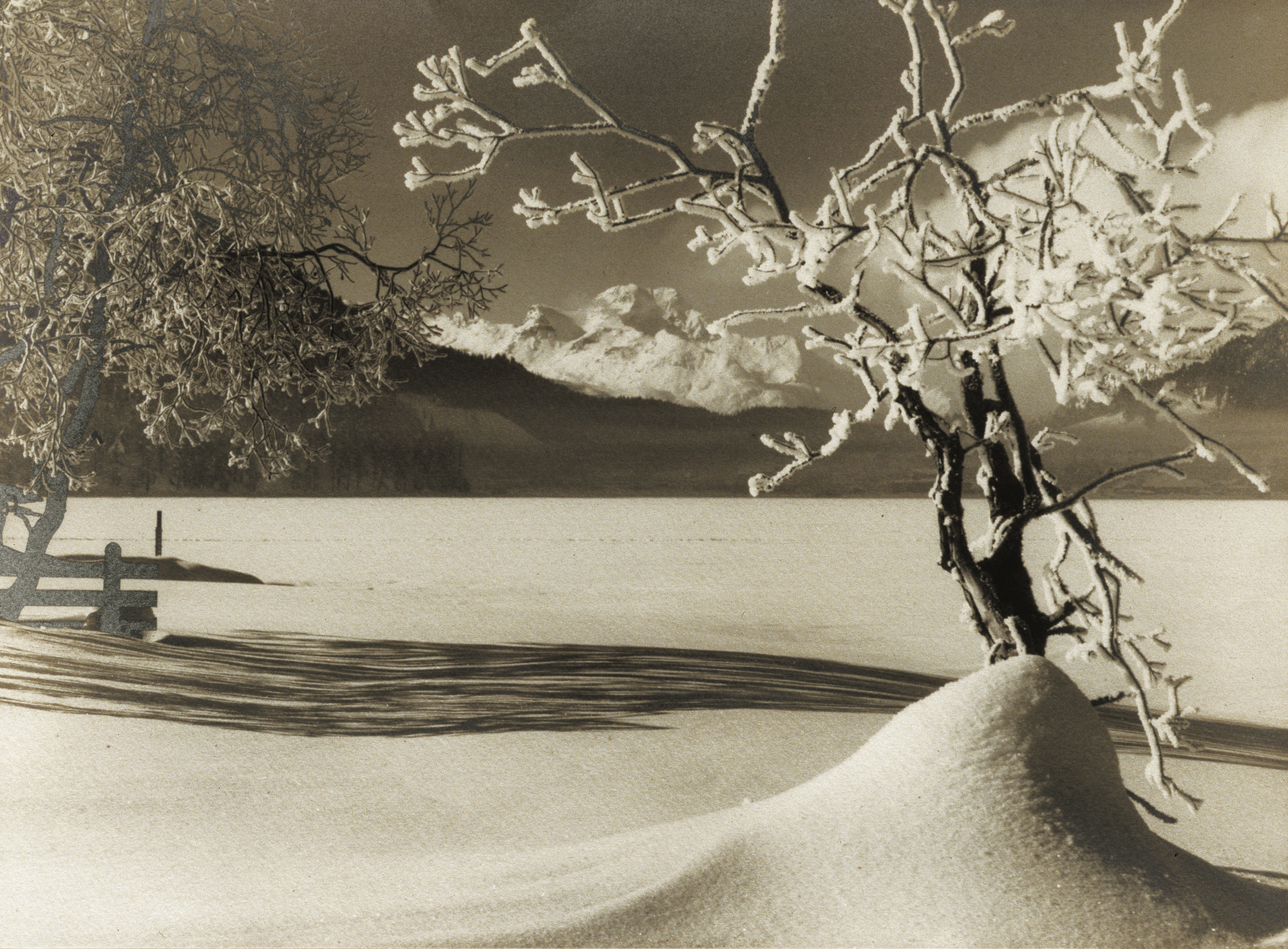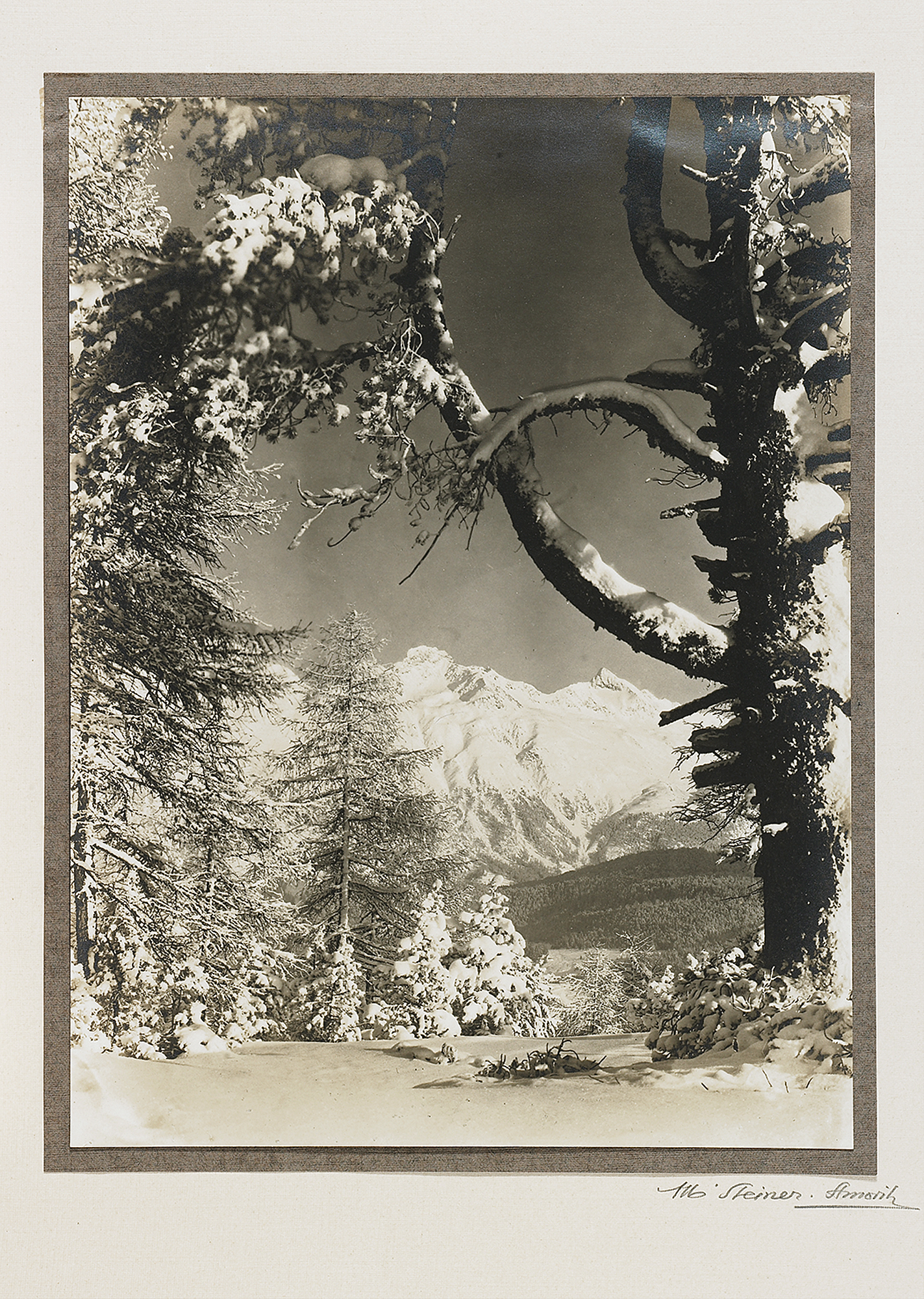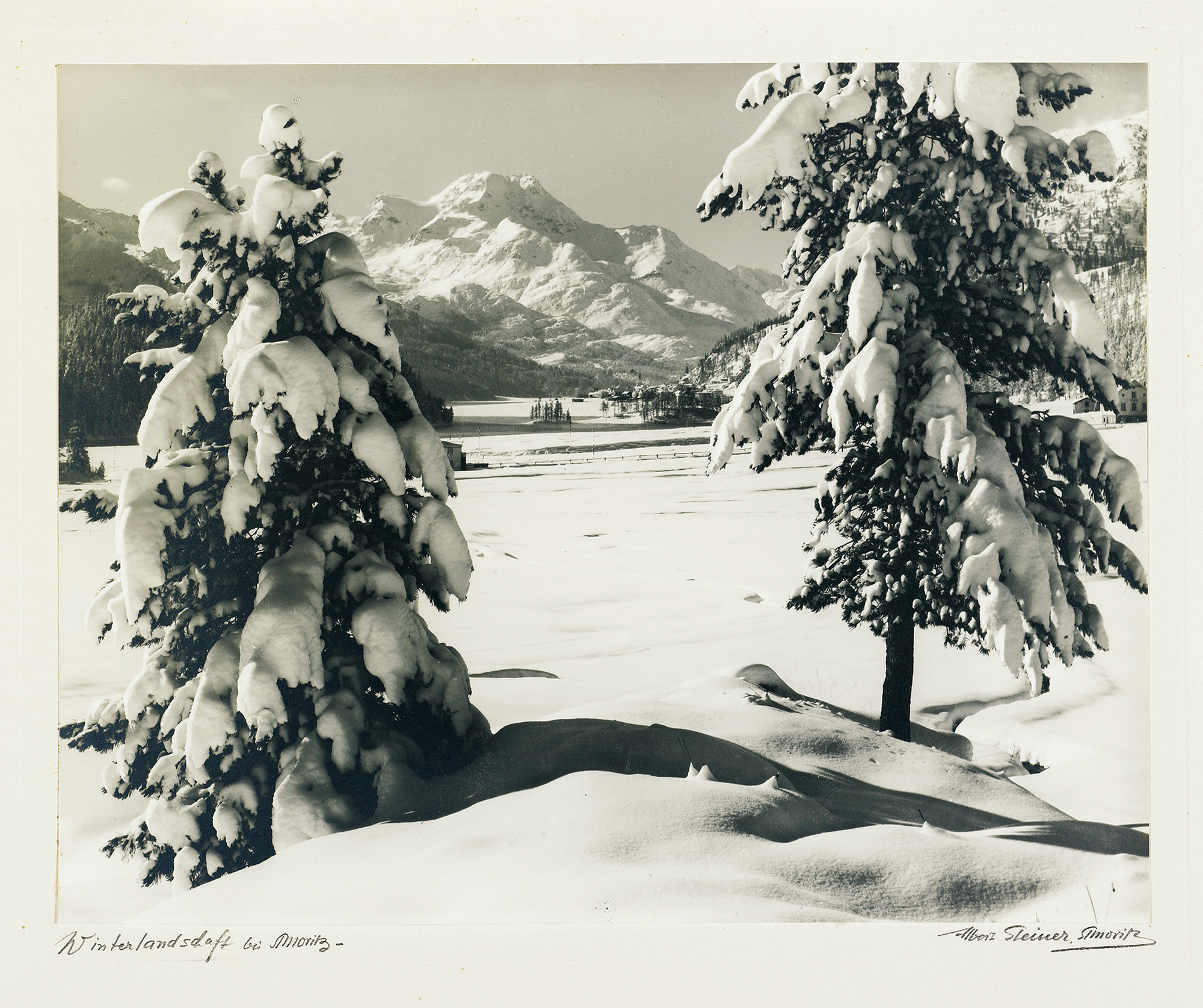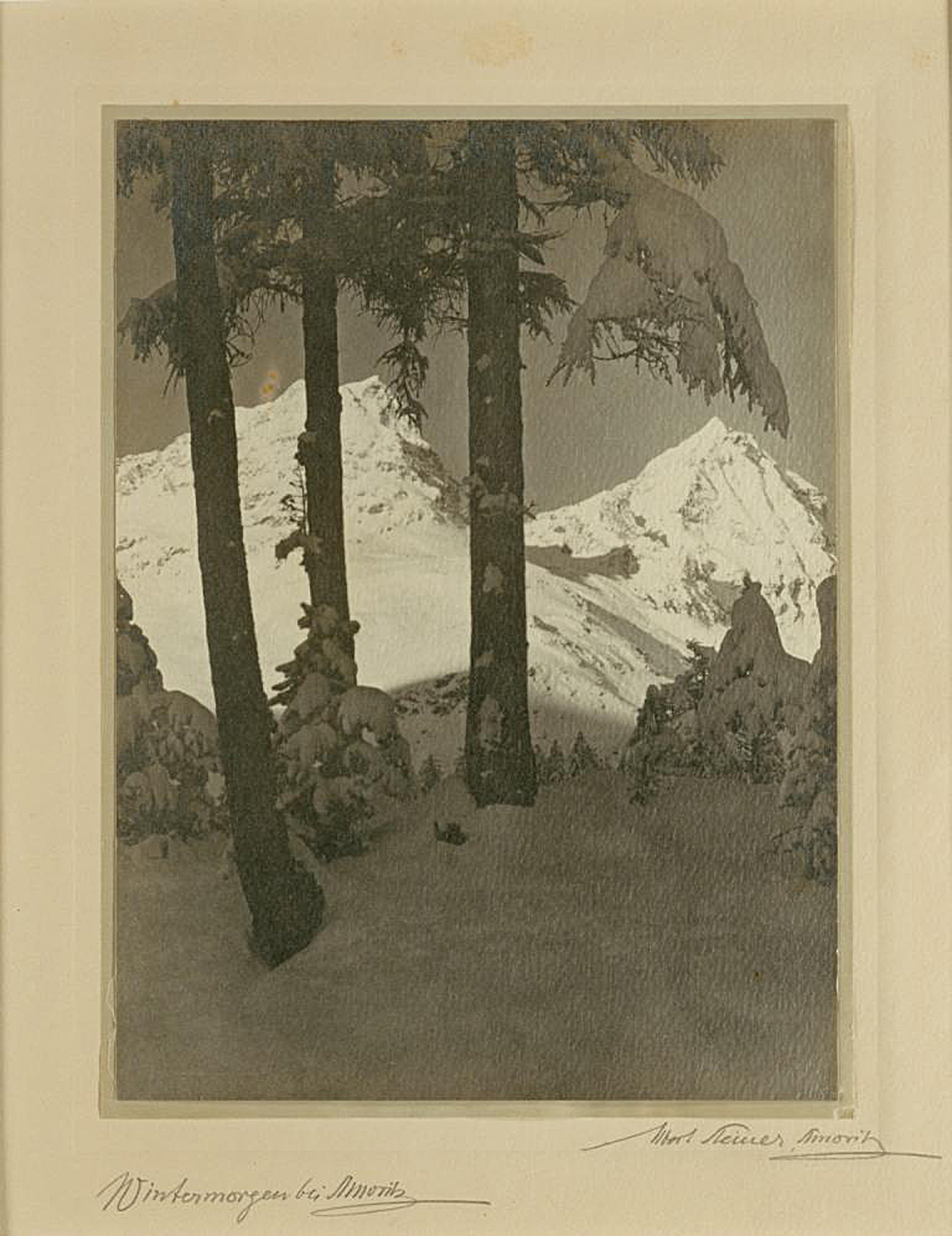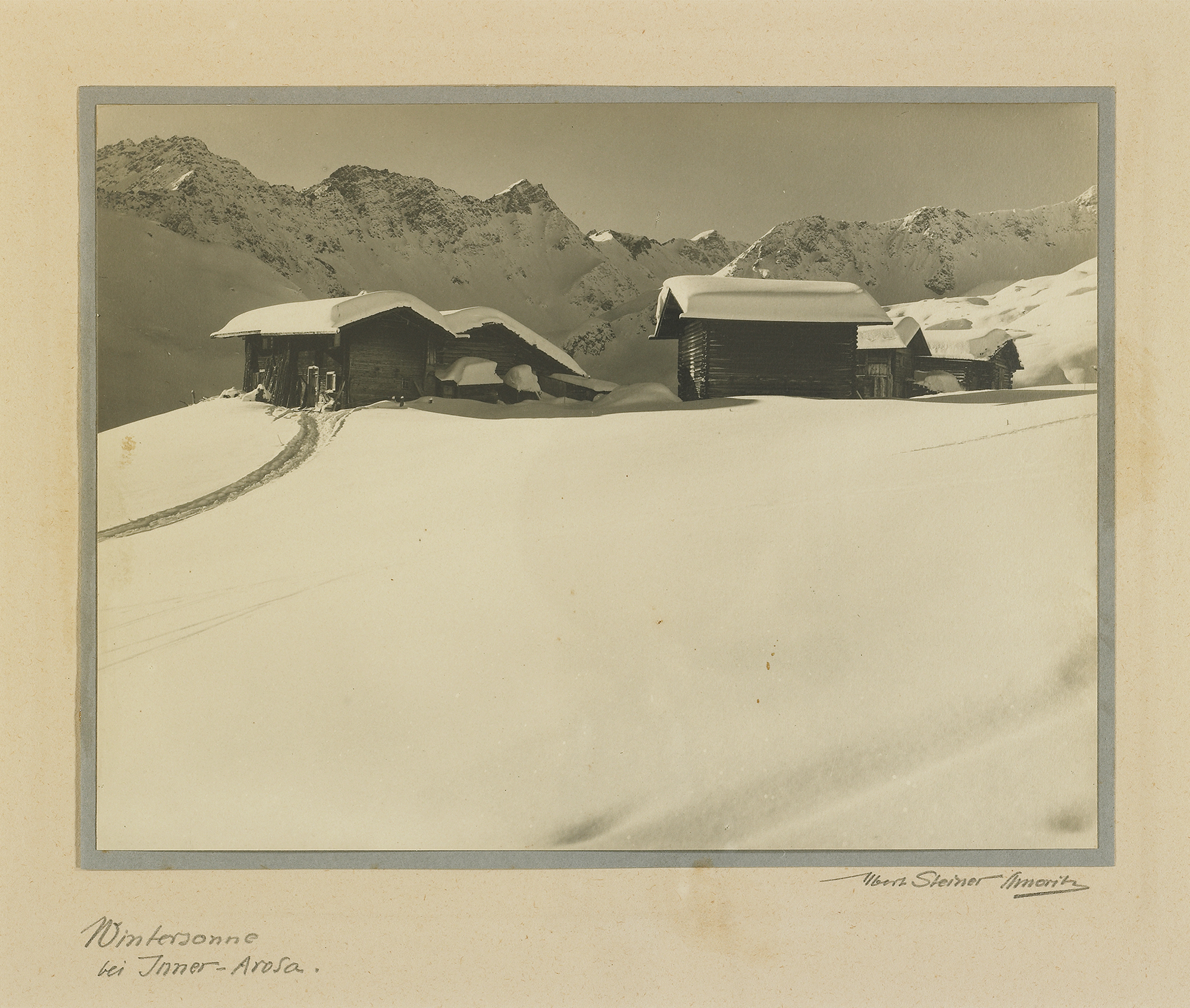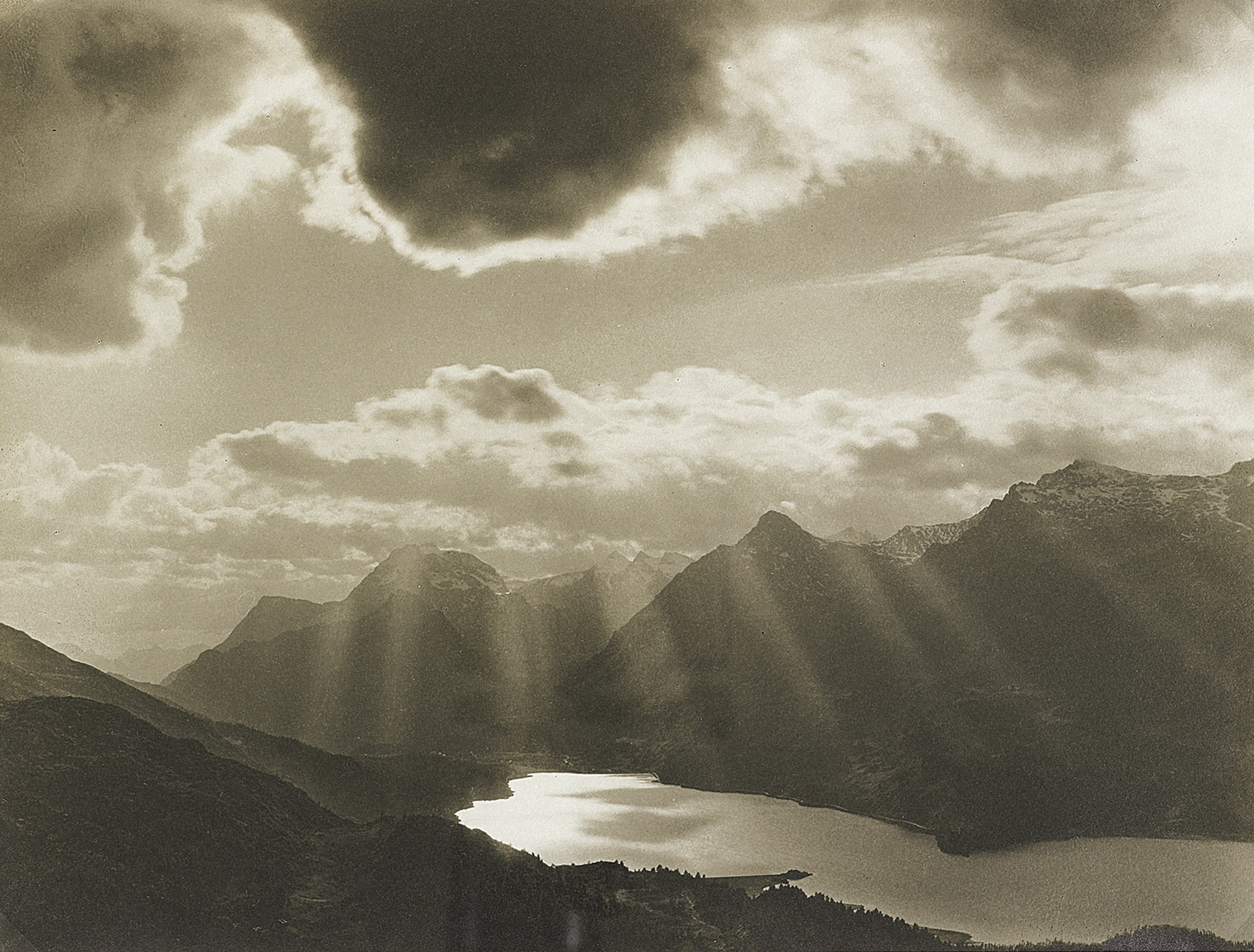A pioneer of photography in Switzerland, Albert Steiner, who saw himself as an artist, envisaged the technique of photography as an independent means of artistic creation.
Following an apprenticeship in Thun under Jean Moeglé, he works in Geneva for Fred Boissonnas before opening his own studio in 1904 in the same city. Between 1906 and 1909, he discovers the Engadin whilst working with the photographer Walther Küpfer in Saint-Moritz. He begins to build up a body of work centred on landscape photography, spending all his summers in this part of the Grisons, where he eventually settles.
In the end his career will reflect forty-six years of living in the Engadin mountains and exploring its deeply crevassed glaciers, its tarns, its distant peaks and high valleys. His photos create the portrait of an untouched Switzerland whose landscapes show an elegance that has indeed contributed to the perception of an Alpine paradise.
Steiner produces black-and-white images that display great technical perfection and express his admiration as he stands before this nature and its timeless beauty. His photography shows a close kinship with the pictorialist trend, which borrows its effects from painting and favours personal expression and artistic creation over photographed reality.
Steiner’s oeuvre reaches its maturity between 1910 and 1930 and his first major shows take place in the 1920s in Switzerland. His collection Schnee Winter Sonne (Snow Winter Sun), published in 1930, is now considered the first “modern” photographic album devoted to Switzerland, comparable to the famousDie Welt ist schön (The World Is Beautiful – 1928) by the German photographer Albert Renger-Patzsch.
Unlike other photographers of his generation, Steiner fought to have his work recognised as a body of art. Nowadays he is indeed identified as an artist in his own right; a major travelling retrospective was devoted to him in 2005 at Chur’s Bünder Kunstmuseum, in 2006 at Winterthur’s Fotostiftung Schweiz, and in 2007 at Lugano’s Galleria Gottardo.
Following an apprenticeship in Thun under Jean Moeglé, he works in Geneva for Fred Boissonnas before opening his own studio in 1904 in the same city. Between 1906 and 1909, he discovers the Engadin whilst working with the photographer Walther Küpfer in Saint-Moritz. He begins to build up a body of work centred on landscape photography, spending all his summers in this part of the Grisons, where he eventually settles.
In the end his career will reflect forty-six years of living in the Engadin mountains and exploring its deeply crevassed glaciers, its tarns, its distant peaks and high valleys. His photos create the portrait of an untouched Switzerland whose landscapes show an elegance that has indeed contributed to the perception of an Alpine paradise.
Steiner produces black-and-white images that display great technical perfection and express his admiration as he stands before this nature and its timeless beauty. His photography shows a close kinship with the pictorialist trend, which borrows its effects from painting and favours personal expression and artistic creation over photographed reality.
Steiner’s oeuvre reaches its maturity between 1910 and 1930 and his first major shows take place in the 1920s in Switzerland. His collection Schnee Winter Sonne (Snow Winter Sun), published in 1930, is now considered the first “modern” photographic album devoted to Switzerland, comparable to the famousDie Welt ist schön (The World Is Beautiful – 1928) by the German photographer Albert Renger-Patzsch.
Unlike other photographers of his generation, Steiner fought to have his work recognised as a body of art. Nowadays he is indeed identified as an artist in his own right; a major travelling retrospective was devoted to him in 2005 at Chur’s Bünder Kunstmuseum, in 2006 at Winterthur’s Fotostiftung Schweiz, and in 2007 at Lugano’s Galleria Gottardo.
